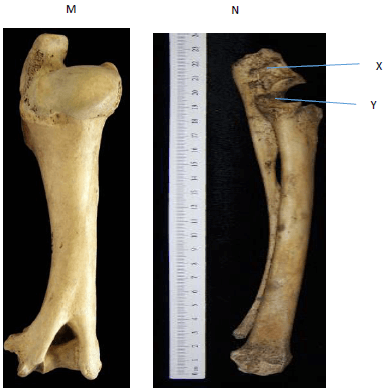You are provided with photographs of specimen M and N. Examine them.

- Identify the bones.
- Name the parts labeled X and Y.
- State three significance of the part labelled Y.
- Calculate the actual size of specimen labelled M. (Show your working).
- Name the part of the mammalian body from where the specimens were obtained.
- State with reasons the type of joint formed at the proximal and distal end of M